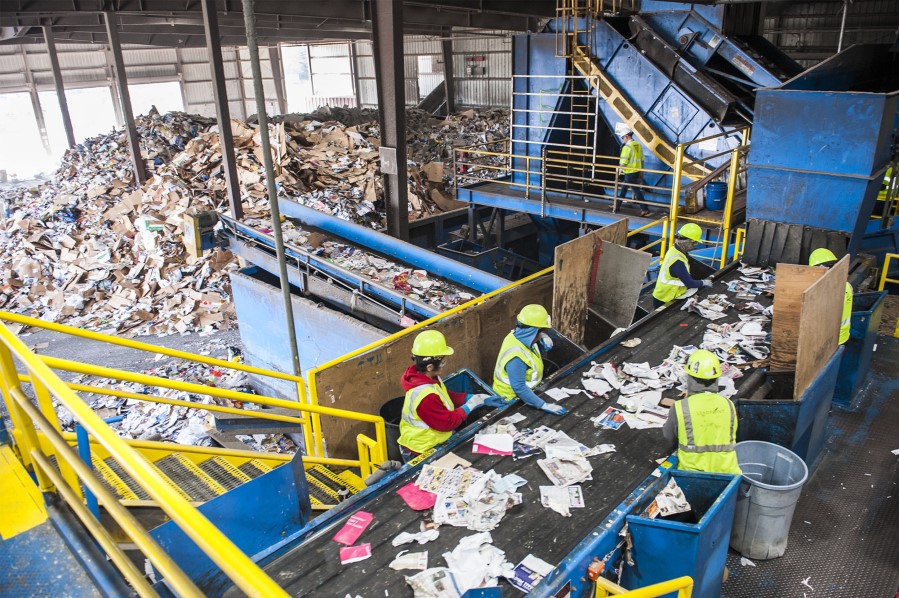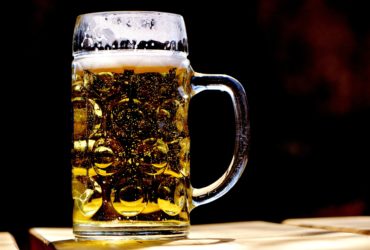BY: MEGAN LOW

Image source: https://www.yelp.com/biz_photos/trader-joes-denver-10?select=GXmcbw0SNoiPctRyb__72A
You have probably witnessed the growth spurt of the meal kit industry over the last couple of years and if not, check out our previous post. Yes, it’s the one where you get exactly two basil leaves and a perfectly peeled clove of garlic sent to your doorstep. I laugh at what our consumerist desire for convenience (and laziness) has created but I must admit, watching a Blue Apron unboxing on YouTube for the first time, I was truly intrigued by this concept – until a comment pointed out the absurd amount of packaging laid out.

Image source: https://www.eater.com/2016/5/20/11691446/meal-delivery-blue-apron-plated-hello-fresh-marley-spoon

Image source: http://www.marinobambinos.com/2014/05/convenient-family-cooking-with-blue-apron/
With my new-found awe being turned into a shocking realization, I wanted to see exactly how these services package their ingredients, so, I did a little digging. To my surprise (because I have a pessimist’s view on industries), I found that many of these meal kit services actually promote recycling or reuse of their packaging. Companies like Chef and Hello Fresh dedicate an entire page on their website, boasting the ease of recycling their boxes, liners or jars.

Image source: https://blog.hellofresh.com/recycling-projects/
They commonly use #4 plastic film (low-density polyethylene or LDPE) for food wraps and #5 plastic (polypropylene or PP) for jars (1,2) which can both be recycled. Green Chef offers corn-based insulation which can be recycled just like paper. While this is effort on their side is laudable, the unfortunate reality is that many consumers may not recycle anyway. Meal kits are sold for the purpose of convenience and for many, recycling may just be the opposite. And I believe understanding recycling has something to do with its drawback.
It’s true, plastics are a confusing material – you can throw your water bottle in the recycling bin, but why not plastic bags, for example? Well, unlike your single component water bottles (made from polyethylene terephthalate or PET), there are plastics that contain multiple layers, like your clingwrap or plastic films which can cause contamination between polymer types (3,4). These are reasons why they need to go to special recycling pick-up centers like at Walmart or Target. For recycling facilities, post-consumer plastics are also more complex than post-industrial ones (like scraps from processes in factories) because of contamination with organic components like food residue, or inorganic components like labels (3).
And for us consumers, besides struggling to figure out what can go into your home recycling, I believe specifically food packaging is commonly misunderstood – that once something comes in contact with food, we assume it’s dirty, and dirty equals trash. But sometimes all it needs is a quick rinse and you’ll be saving the recycling facility some work (and landfills a lot of space!).
It’s important to avoid the trash as much as we can because we all know what happens at landfills – everything sits there for what seems like eternity because of extremely slow biodegradation due to lack of oxygen, sunlight and necessary microorganisms underneath those piles of trash. And that’s if they biodegrade at all – plastic polymers, unless made with additives that induce polymer chain breakage, are mostly stable, inert and resist attack of microorganisms (5). Looking at our alternative option, what happens after you put something in the recycling bin? To make recycling less of a distant concept, let’s take a look at what happens to your food packaging along the way.
The Process
There are many different methods and recycling schemes used by facilities around the world so this is a general outline.
- Collection
It starts out with materials being collected from curbsides/residential areas and are transported to material recovery facilities where sorting takes place.
- Sorting
Since is practiced in the U.S., recyclables need to be sorted according to their respective materials like glass, metal, paper or plastic. Items travel on a few miles worth of conveyor belts while being sorted automatically with the use of magnets to collect ferrous materials, while non-ferrous materials like aluminum are separated by an eddy current generating a magnetic field. Paper and glass can be separated based on weight (by using airflow) or size (by using rotating sieves) (3).

Optical sorting machine by color for plastic waste recycling Image source: http://ritmindustry.com/catalog/sorting-systems-sorters-diverters-mergers/color-sorting-machine-automatic-for-waste-for-plastic-recycling/
When it comes to sorting plastics, common ways are by using Fourier Transform Near Infrared (FT-NIR) since each polymer has a unique near infrared spectrum and color recognition cameras to differentiate colors of PET bottles optically such as clear, blue and green (4,6). Trained workers also help to manually filter any overlooked items by automated sorting.

Image source: https://www.columbian.com/news/2018/sep/16/clark-asks-are-you-recycling-the-right-way-in-clark-county/
Next, they undergo a series of size reduction, separation and washing.
- Size reduction
Materials may undergo crude shredding, turning into fist-sized particles, to facilitate separation since items could be stuck inside another. This is called the first grinding. It would also help having a uniform size if weight was used as a method of separation since that 500-page textbook might not be distinguished from a glass jar. A second grinding later in the process turns material into small flakes about 1-12mm, where its smaller form may be more useful for some separation methods or for reprocessing (3).

Sink float separation tank Image source: http://www.bub-anlagenbau.de/products/separation/sink-float-tank/
- Further separation
Materials can be further separated by density through float-sink methods in water or by weight using wind sifters. For example, PP and LDPE will float in water or be blown upwards while the heavier, hard plastics like high-density polyethylene (HDPE) sink or fall against the airstream and be carried away to be processed according to individual polymer type (3). Other methods, to name a few, include electrostatic separation where polymer flakes, which are positively or negatively charged by a charging unit, are deflected using an electric field, X-ray detection or density separation using magnetic liquid.

Combination of stone separator and wind sifter Image source: https://www.recyclingproductnews.com/article/20116/from-two-to-one-the-new-stone-and-light-material-separator-from-komptech
- Washing
Impurities like scraps or rocks can be discarded gravitationally in rotating drum washers while friction washers can rid organic residue sticking to the plastics.
- Extrusion/Pelletizing
The now single-polymer plastics are extruded into strands and pelletized for easier use in converters that turn these polymers into semi-final or final products (7).
- Repurposing
The pellets are cooled by water (quenching) and are sold to textile or sheet-making plants where they are molded into new products (7)!
In a less literal sense, what else happens when you recycle?
A lot! You save energy, materials and natural resources. For example, according to NowThis News, the same energy used to create one new aluminum can will produce 20 with recycled aluminum (7). Plastics are also derived from non-renewable petrochemicals that come from fossil oil and gas, so instead of using up this natural resource, we can recover these petrochemical constituents to be reused again (4). Not only does this benefit the environment, it is advantageous economically as it saves precious materials from otherwise being wasted sitting in a landfill. Knowing what can be recycled and what cannot may be confusing but as How2Recycle puts it: “When we see packaging as valuable, recycling makes a lot of sense” (9). And hopefully now it does!
While avoiding the use of plastic as much as possible is the best option (“reduce” does come first in the 3R’s after all), that is not to demonize meal kits. Because at this point in time, plastic use may be inevitable especially when it comes to food packaging. Therefore, recycling is still a way to battle this and is surely a more environmentally-sound alternative than adding on to heaps of trash. So if must have your meal kit delivery, just spend some time thinking about where you want that packaging to end up at (hint: not the landfill). Hopefully by being able to visualize the journey your plastics embark on on those conveyor belts, it will make recycling a process more people think about. Happy eating (and recycling)!
References
- Recycling | HelloFresh https://www.hellofresh.com/green/?redirectedFromAccountArea=true [Accessed 26 Sep, 2018]
- Are the packaging materials eco-friendly? – Green Chef Support https://help.greenchef.com/hc/en-us/articles/207927826-Are-the-packaging-materials-eco-friendly- [Accessed 26 Sep, 2018]
- Ragaert K, Delva L, Geem KV. 2017. Mechanical and chemical recycling of solid plastic waste. Waste Management. 69: 24-58. http://dx.doi.org/10.1016/j.wasman.2017.07.044
- Hopewell J, Dvorak R, Kosior E. 2009. Plastics recycling: challenges and opportunities. Philosophical Transactions of the Royal Society B. 364(1526): 2115-2126. DOI: 10.1098/rstb.2008.0311
- Tolinski M. “Choosing Additives for Sustainability”. Additives for Polyolefins (2nd ed). William Andrew Publishing, 2015. 183-189. https://doi.org/10.1016/B978-0-323-35884-2.00020-X.
- Plastic Recycling with NIR Spectroscopy – Ocean Optics. 2016. https://oceanoptics.com/plastic-recycling-nir-spectroscopy/ [Accessed 26 Sep, 2018]
- Al-Salem SM, Lettieri P, Baeyens J. 2009. Recycling and recovery routes of plastic solid waste (PSW): A review. Waste Management. 29(10): 2625-2643. https://doi.org/10.1016/j.wasman.2009.06.004
- NowThis News. “What Happens to Recycling After It’s Collected? | NowThis.” 2017. https://www.youtube.com/watch?v=s4LZwCDaoQM
- About H2R – How2Recycle. http://how2recycle.info/about [Accessed Sep 26, 2018]






Thanks for having this article, it helps a lot. It’s a well-written blog and it is very informative. Keep on blogging, looking forward to see more of your posts!